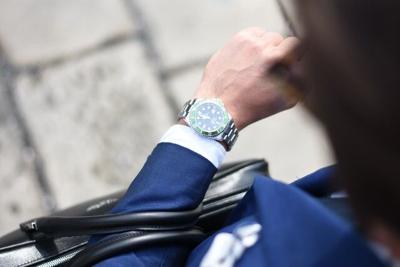
Rolex is such an internationally recognized watchmaking brand that, for many, it seems to be inexorably intertwined with the clock-making traditions of the Swiss cantons. Indeed, given that its headquarters are located in Geneva, it is easy to understand why Rolex Watches are so often thought of as the quintessential Swiss brand. However, Rolex was founded in London back in 1905. Some of the company's history is quite surprising, and perhaps this accounts for why it is considered one of the premier brands in the world today, not just in watchmaking but in all classes of luxury goods, too.
The Early History of Rolex
Alfred Davis and a German-born British entrepreneur named Hans Wilsdorf set up a watchmaking business together as brothers-in-law in 1905. When the company was first set up, a hallmark of W&D used to go on the back of the luxury watches because their company bore both the men's surnames. The pair imported Swiss movements made by Hermann Aegler in the early years and tended to fit them into watch cases made by third parties, Dennison among them.
In 1908, the businessmen decided to make their own brand of watches rather than simply supplying them to jewelers who tended to put their marque on them. When the name Rolex was born, Wilsdorf thought you could be pronounced easily in multiple languages. The same year that Rolex was trademarked, Wilsdorf also opened his first offices in Switzerland. By 1915, the name Rolex had become synonymous with luxury and high quality, so Wilsdorf decided to change the firm's name to the Rolex Watch Company Limited.
After the cessation of hostilities of the First World War, luxury import taxes shot up in the UK. Meanwhile, export duties on the precious metals used for the watch cases went up. Rolex moved its entire operation from London to Geneva to get around these rising costs. By 1920, the firm had changed its name once more to reflect its new status as a Swiss company. Soon afterward, the first Oyster Rolexes started to appear. These were designed to have cases that could mean a waterproof and dustproof wristwatch was not only viable but reliable, too. Soon, Rolexes were being demonstrated in cross-channel swims and other stunts that helped to promote the brand.
Rolex Through the Latter Half of the 20th Century
With an eye for innovation, Wilsdorf oversaw numerous cutting-edge developments in luxury wristwatch designs before his death in 1960. In 1945, for example, Rolex introduced the Datejust, a wristwatch that could automatically change the date on the dial. In 1954, the firm came out with a watch that showed two time zones at once, the Rolex GMT Master. Throughout the 1960s, 1970s, and 1980s, Rolex developed new models and sub-brands. Many were officially endorsed by glamorous celebrities, such as Sean Connery in the James Bond movie franchise and the American car racer and film star Paul Newman.
Rolex Today
Rolex is an established brand nowadays. And yet, it continues to innovate in watch design and acting in a philanthropic role sponsoring the arts, literature, and architecture. According to a leading used Rolex dealer, Bonds of Brentwood, demand for the brand is still sky-high in the UK, with interest in all of its past models often being intense. However, Rolex does not rest on its historic reputation. Its 2021 collection included several unique designs, notably the palm motif that featured on the latest model of the Datejust, the Oyster Perpetual 36.


(0) comments
We welcome your comments
Log In
Post a comment as Guest
Keep it Clean. Please avoid obscene, vulgar, lewd, racist or sexually-oriented language.
PLEASE TURN OFF YOUR CAPS LOCK.
Don't Threaten. Threats of harming another person will not be tolerated.
Be Truthful. Don't knowingly lie about anyone or anything.
Be Nice. No racism, sexism or any sort of -ism that is degrading to another person.
Be Proactive. Use the 'Report' link on each comment to let us know of abusive posts.
Share with Us. We'd love to hear eyewitness accounts, the history behind an article.